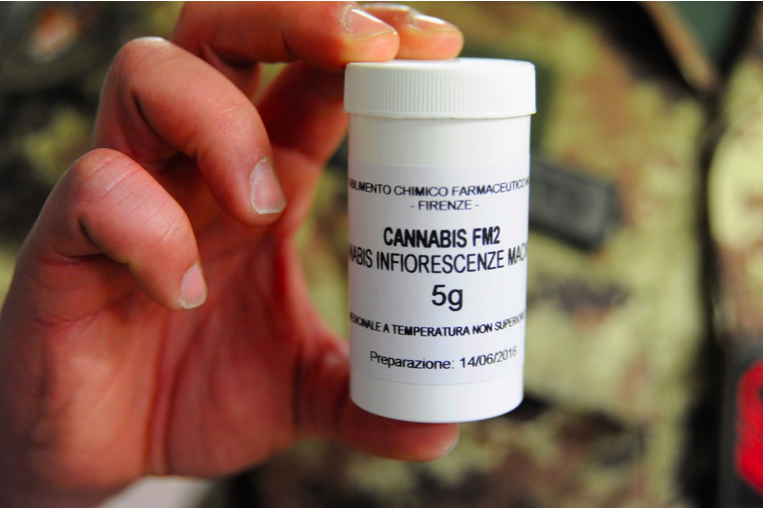Italy’s army-grown medical cannabis does not meet the country’s needs
Italy’s approach to medical cannabis is different from other western European countries. The cultivation of the plant can in fact only be grown at a heavily guarded military facility in Florence, where two greenhouses produced a yield of about 220 pounds this year.
“We do everything in-house,” Col. Antonio Medica said, the facility’s director. “We grow the plants, harvest them, dry and grind the leaves, sanitize the final product with gamma rays, then ship it to pharmacies and hospitals.”
The country’s cannabis program at the Military Chemical Pharmaceutical Plant is soon set to expand and receive an additional $2 billion in public funding. If the new bill is approved, military officials said they expect production to triple within in a year.
In addition, the bill would make medical cannabis free for all patients, with the cost covered by the government. Until now, local governments have covered the cost in 11 of Italy’s 20 regions.
However, some are afraid the quantity and quality of the grown cannabis will not be sufficient, even with the new funding.
Because growing medical cannabis requires special authorization from the Health’s Ministry’s narcotics office, no private entrepreneur managed to set up a business since legalization started in 2007, and the product had to be imported from abroad.
Access to medical care is considered a constitutional right in Italy, therefore the government decided to assign the task of growing medical cannabis to the military in 2014.
“Producing medicines is a standard part of what the Defense Industries Agency does, because health is a matter of national security,” Medica said.
Some of the problems that came with the decision involved the army’s ability to make only one strain of cannabis called FM2, which is low in THC, compared to imported strains.
Andrea Trisciuglio, a 39-year-old patient who uses cannabis to treat his multiple sclerosis symptoms, said he has been using medical cannabis for the past 10 years but has found the local supply ineffective.
“The FM2 just doesn’t work for patients like me,” he said. “I have to use Bedrocan” — a variety of cannabis with about 22 percent THC, compared with FM2’s 8 percent. Trisciuglio said that his hospital imports Bedrocan from the Netherlands but that he sometimes has to wait as long as a month for it.
The problem with importing cannabis from the Netherlands is that it “is expensive, which also makes it slow,” said Carlo Valente, a lawyer in the southern city of Lecce who is representing Trisciuglio and other patients.
According to Valente, Dutch medicines reach Italy through intermediary agencies, which raises their prices.
“This is making doctors, who already struggle with the social taboo associated with cannabis, even more reluctant to prescribe it and hospital pharmacies less cooperative,” he said.
The army-produced cannabis costs $7 a gram, compared to imported cannabis, that can reach up to $84 a gram.
“We are a non-profit,” Medica said.
Besides the quality of the plant, the army also lacks the capability to produce all the therapeutic cannabis the country needs.
National consumption of the drug is between 800 and 1,000 pounds a year, according to the military. Therefore, even if the military was to produce the anticipated 660 pounds, it would not meet the country’s needs, making imports necessary.
“The army alone is just not enough,” Trisciuglio said. “We need to make it easier for others to grow medical cannabis.”
In 2021, Trisciuglio and other patients petitioned the local government to be able to grow their own cannabis under supervision but were not allowed to do so.
Medica, however, believes the army will keep up with the demand and maybe even send cannabis abroad.
“We are working around the clock to increase the production and are experimenting with a new variant for patients who are not satisfied with FM2,” he said. “In the near future, we hope to export to San Marino and the Vatican.










